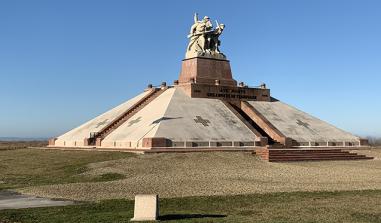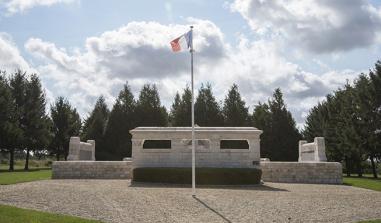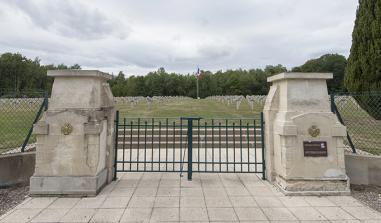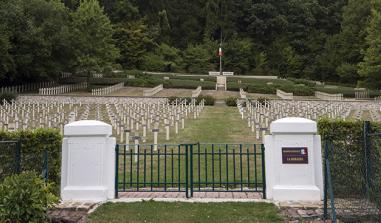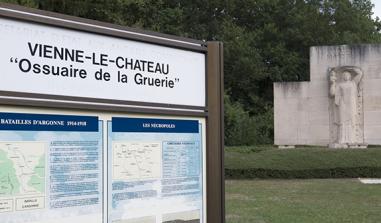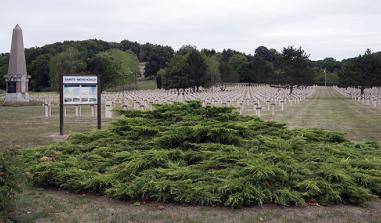"Souain-Perthes-Les-Hurlus" National Cemetery
Cemetery of the 28th Brigade - La Ferme des Wacques
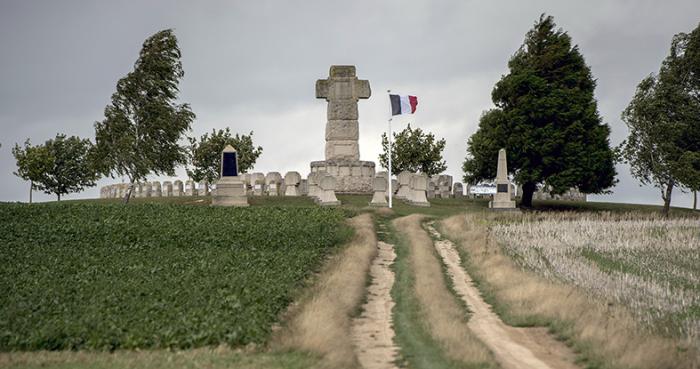
Souain National Cemetery. © ECPAD
Pour accéder au panneau d'information de la nécropole, cliquer 
Located at the top of Côte 160 hill, opposite the site of the former farm, the Ferme des Wacques,
The Battles of Champagne, 1914-18
The Franco-British counter-offensive on the Marne in September 1914 and the failed “Race to the Sea” signalled the end of the mobile war on the Western Front. To protect themselves from artillery fire, the belligerents dug in.
In the winter of 1915, General Joffre launched a series of attacks on the German trenches in Champagne, all of which failed. Intended to chip away at the German lines in the sectors of Souain, Perthes, Beauséjour and Massiges, these were particularly bloody operations. They yielded no results, and the front didn’t budge.
In the summer, to break the deadlock and provide support to the struggling Russians on the Eastern Front, Joffre decided to conduct a fresh offensive. Supported by another operation in Artois, the main operation took place on the vast, arid chalk plain of Champagne, on a front spanning 15 miles, from Auberive to Ville-sur-Tourbe. It was carried out by the 2nd and 4th Armies, against the Germans of the 3rd Army, who were dug into solid trenches. Further back, on the opposite slope, was a second position, hidden from aerial reconnaissance and out of range of the French guns.
After an artillery bombardment lasting three days, the attack was launched on 25 September. The French took the first lines, with the exception of the Butte du Mesnil.
On the site of this cemetery, the 28th Brigade, comprised of the 35th and 42nd Infantry Regiments, entered the fray. The men, many of whom came from Belfort, must take the Plateau des Tantes, which lay to the west of the Ferme de Navarin. There, dug into a position covered with barbed wire and machine guns, the enemy put up violent resistance. Sustaining heavy losses, on 27 September the brigade succeeded in taking a 500 metre stretch of the Tranchée des Tantes.
The eagerly awaited breakthrough appeared to be successful. But a lack of resources meant it could not be exploited. Surrounded and subjected to violent shelling, the 28th Brigade was annihilated, together with the farm at the heart of the fighting, the Ferme des Wacques.
More broadly, the momentum of the offensive was broken by the second position, which remained intact. The exhausted French troops had to go on fending off powerful counter-attacks, during which the two armies lost 138 000 men. By November, difficult weather conditions and the sheer scale of the losses forced Joffre to abandon the idea of carrying out further attacks. The front returned to relative calm.
The German offensive of July 1918 put this front once more at centre stage. But in the autumn, engaging all his forces from the Meuse to the North Sea, and with growing support from the Americans, General Foch conducted a broad manoeuvre. In the Reims area, General Gouraud’s army successively took Navarin, Tahure and Sommepy. In the Minaucourt sector, the French took Mont-Têtu and Le Mesnil and crossed the Dormoise, advancing towards the Ardennes until November 1918.
Today, the Suippes area preserves the memory of this bitter fighting, through the ruins of the villages of Perthes, Hurlus, Mesnil, Tahure and Ripont, together with 18 cemeteries. In the commune of Souain alone, there are three more military cemeteries, as well as the iconic memorial and ossuary of La Ferme de Navarin, containing the bodies of 10 000 unidentified soldiers and preserving the memory of the French, American, Polish, Russian and Czechoslovakian soldiers involved in the fighting on the Champagne front.
In the cemetery are two regimental memorials to the 44th and 60th Infantry, which sustained particularly heavy losses in the fighting. The memorials, originally erected on the battlefield, were moved in 1985, following land consolidation.
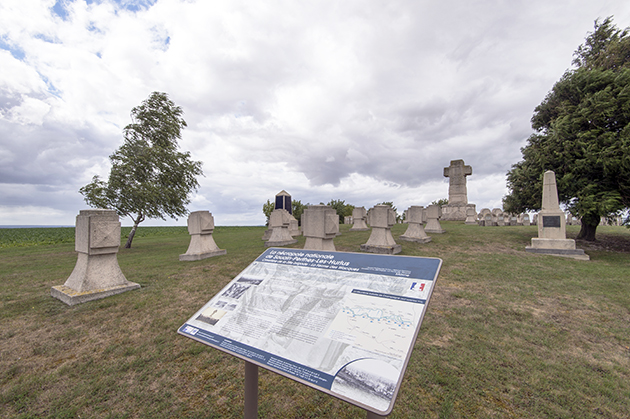
Souain National Cemetery. © ECPAD
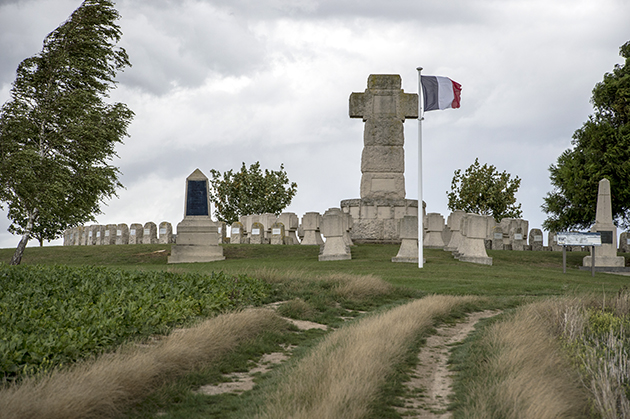
Souain National Cemetery. © ECPAD
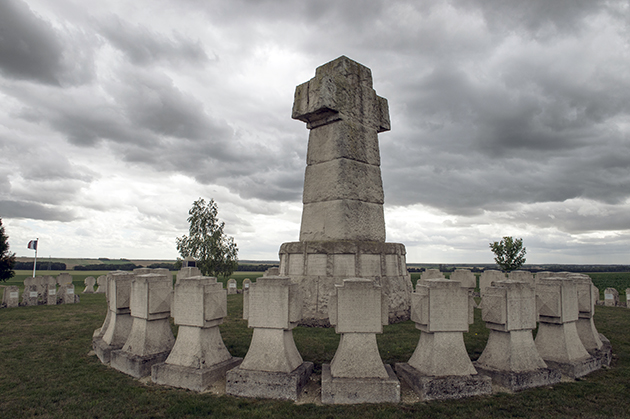
Souain National Cemetery. © ECPAD
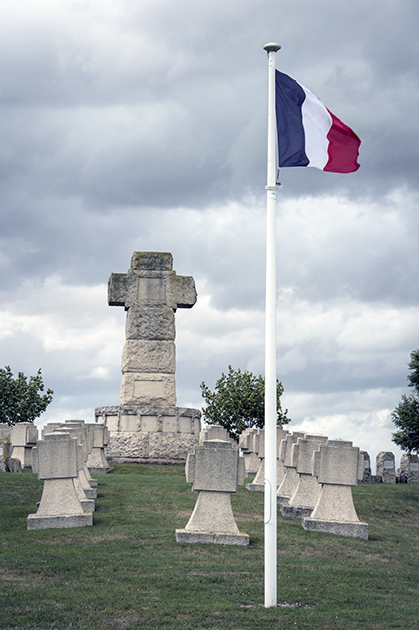
Souain National Cemetery. © ECPAD
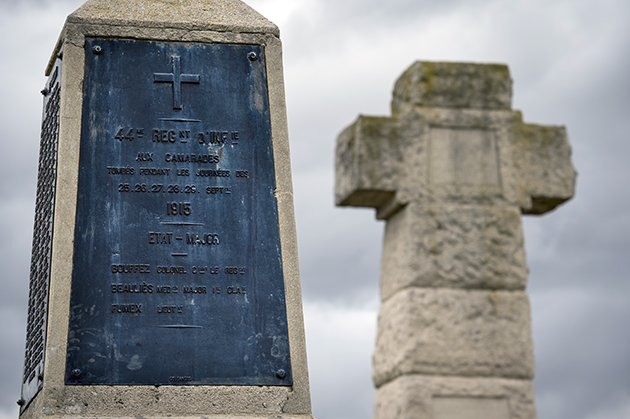
Souain National Cemetery. © ECPAD
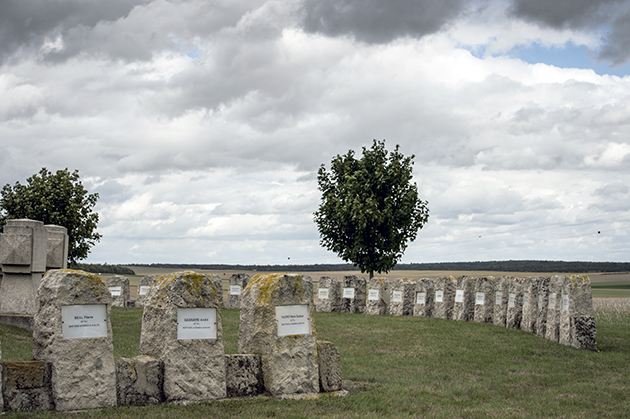
Souain National Cemetery. © ECPAD
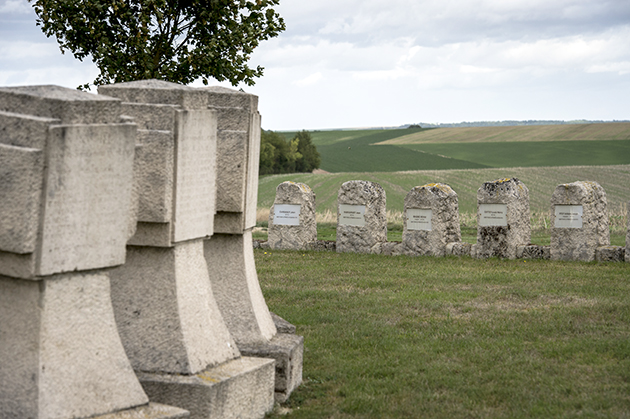
Souain National Cemetery. © ECPAD
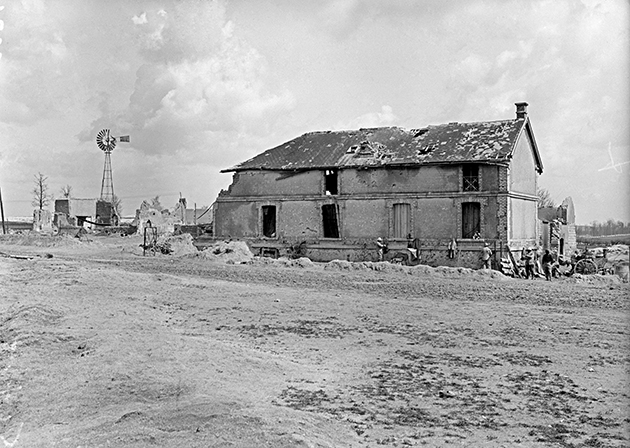
Ferme des Wacques, 1915. © ECPAD
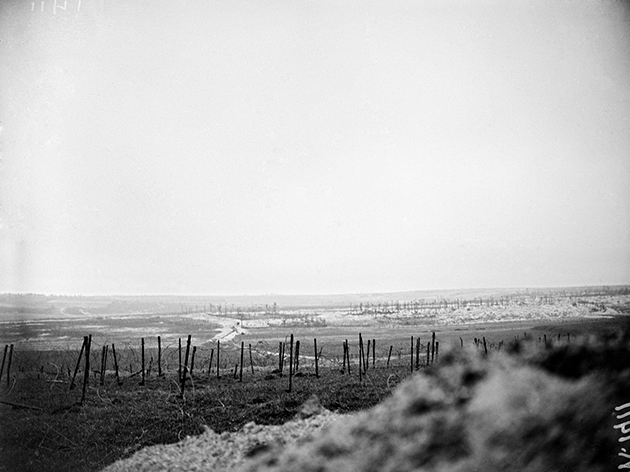
View of the German lines west of Souain. © ECPAD
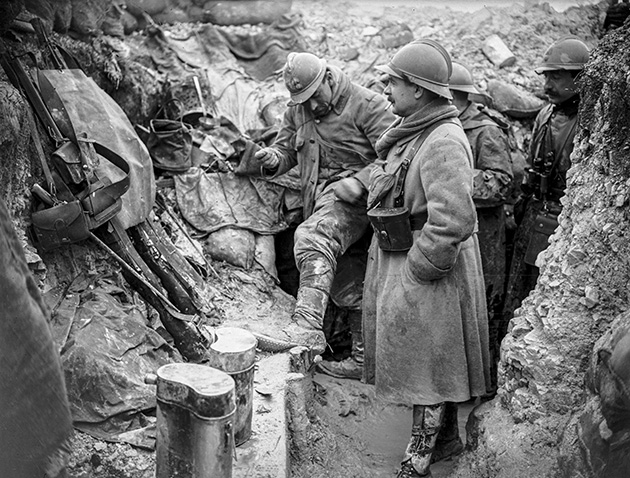
In a trench near Souain, a French soldier darns his trousers. © ECPAD
French soldiers wearing Adrian helmets, which equipped much of the French Army from autumn 1915 onwards. Based on the Medieval burgonet, these metal helmets succeeded the kepi and the cervelliere, providing better protection for the soldiers.
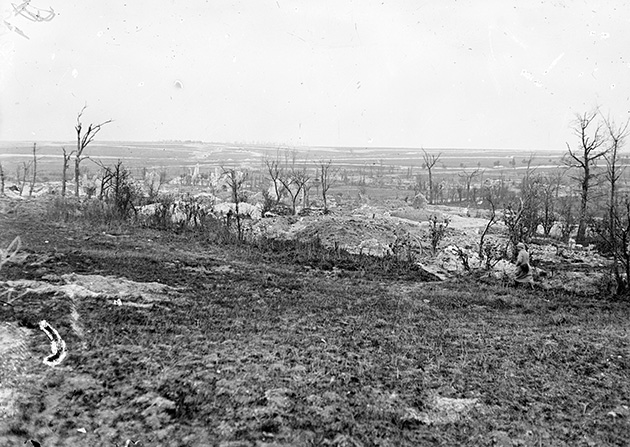
The ruins of Perthes-lès-Hurlus. © ECPAD
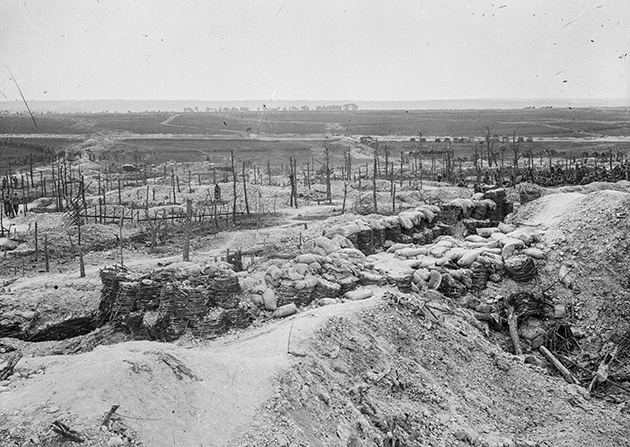
Former German trenches in Sabot wood. © ECPAD
Despite advancing two or three miles, a breakthrough was not achieved.

Memorial erected by Father Doncoeur, 1925. © ECPAD
A Jesuit expelled from France in 1901, Father Doncoeur (1880-1961), like many other churchmen, responded to the call for general mobilisation. Chaplain to the 115th, 35th and 42nd Infantry Regiments, he showed unwavering courage and devotion to the troops, in particular by giving them a decent burial.
Practical information
Souain-Perthes-lès-Hurlus
À 3 km de Souain, sur le chemin vicinal
Read more
Read more
Comité départemental du tourisme de la Marne
13 bis, rue Carnot - 51006 Châlons-en-Champagne Cedex
Tel.: +33(0)3 26 68 37 52


